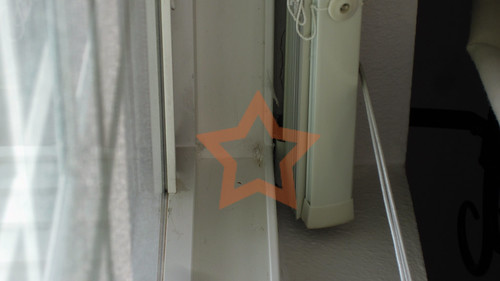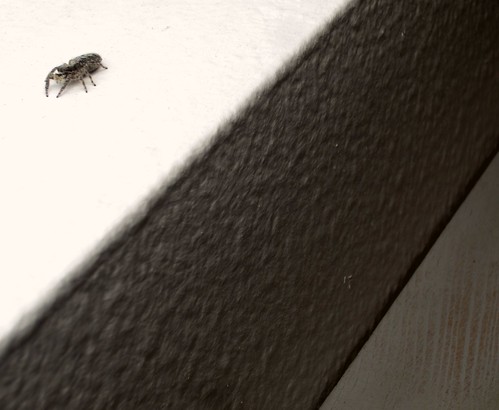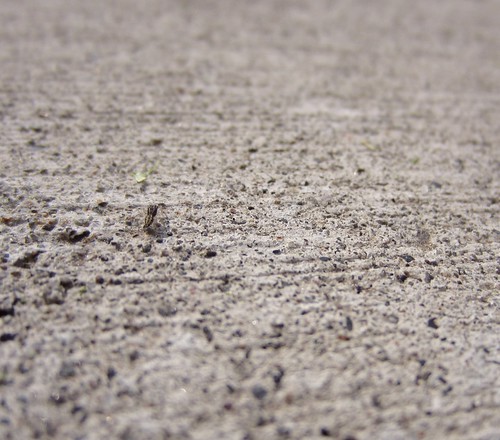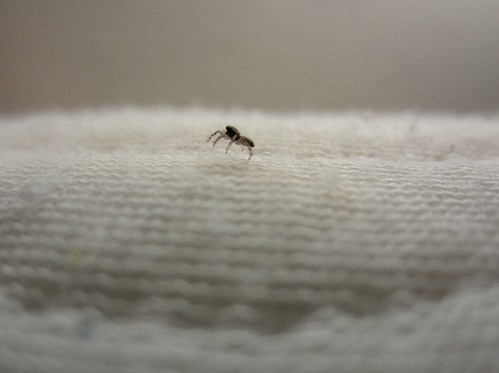bison
Arachnopeon
- Joined
- Aug 10, 2017
- Messages
- 2
I know its not usually recommended to move them but our jumper roommate is now a mom and its not safe for the babies to be out in our room. We'll be moving soon and don't want anyone to get hurt in the shuffle or from being left inside. I think this is the egg sac here behind the blinds, which makes it even harder. Its an awkward place and I worry about hurting the babies trying to get it down.

We saw the first babies yesterday, four or five of them, and three were carried outside to some bushes. We have no idea how long the egg sac has been there or when babies first emerged. We spotted mom at the end of June and decided to leave her alone and stop using the window to keep her from getting hurt so it could've been there over a month.
The babies are approximately half a centimeter long and we think they're Platycryptus undatus (tan jumping spider) based on mom. Unfortunately we don't have any good photos of mom because she was so scared of us but here's the best we have of mom and babies, if it helps or matters at all.



We don't have tanks or anything that we could use to keep any of them, unfortunately, so if its safe to move them where would be a good place to take them? Nearby we have trees (I've seen jumpers in them but also many, many ladybugs), a garden (full of snails/slugs), and a different area with pine trees (lots of birds/slugs). If necessary I could probably take them down to a local park and leave them in the lava rocks (where we've seen many jumpers).

We saw the first babies yesterday, four or five of them, and three were carried outside to some bushes. We have no idea how long the egg sac has been there or when babies first emerged. We spotted mom at the end of June and decided to leave her alone and stop using the window to keep her from getting hurt so it could've been there over a month.
The babies are approximately half a centimeter long and we think they're Platycryptus undatus (tan jumping spider) based on mom. Unfortunately we don't have any good photos of mom because she was so scared of us but here's the best we have of mom and babies, if it helps or matters at all.



We don't have tanks or anything that we could use to keep any of them, unfortunately, so if its safe to move them where would be a good place to take them? Nearby we have trees (I've seen jumpers in them but also many, many ladybugs), a garden (full of snails/slugs), and a different area with pine trees (lots of birds/slugs). If necessary I could probably take them down to a local park and leave them in the lava rocks (where we've seen many jumpers).

